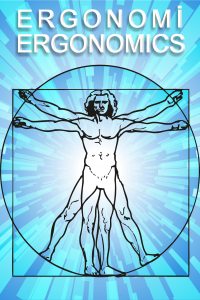ERGONOMIC DESIGN OF THE WORKPLACE FOR FINAL QUALITY CONTROL
The incidence of work-related musculoskeletal disorders remains high and, as these injuries have a high cost for companies and society, it is important to prevent them through ergonomic analysis and workplace design. During the work process, we are always looking to reduce lost time and improve the quality of work. From an ergonomic point of view, it is important to determine what workloads employees are exposed to and to eliminate or at least minimise them by redesigning the workplace. The aim of our research was to minimise the risk at work through the scientific design of workplaces based on a methodological approach. The manual and computerised OWAS method was used to determine and estimate body postures during the workday. It was found that certain postures resulted in significant overexertion, which meant that certain remedial actions were necessary during the work process to prevent possible damage to the body. Several improvements were proposed for the new workplace design: appropriate equipment for workers, lifting table, rotation of workers, construction of quality control facilities and automation of macro tasks.
Anahtar Kelimeler:
Workplace design, Ergonomic analysis, OWAS method, Computer simulation, Final control
ERGONOMIC DESIGN OF THE WORKPLACE FOR FINAL QUALITY CONTROL
The incidence of work-related musculoskeletal disorders remains high and, as these injuries have a high cost for companies and society, it is important to prevent them through ergonomic analysis and workplace design. During the work process, we are always looking to reduce lost time and improve the quality of work. From an ergonomic point of view, it is important to determine what workloads employees are exposed to and to eliminate or at least minimise them by redesigning the workplace. The aim of our research was to minimise the risk at work through the scientific design of workplaces based on a methodological approach. The manual and computerised OWAS method was used to determine and estimate body postures during the workday. It was found that certain postures resulted in significant overexertion, which meant that certain remedial actions were necessary during the work process to prevent possible damage to the body. Several improvements were proposed for the new workplace design: appropriate equipment for workers, lifting table, rotation of workers, construction of quality control facilities and automation of macro tasks.
Keywords:
Workplace design, Ergonomic analysis, OWAS method,
___
- Andrejiova, M., Kralikova, R., Wessely, E., Sokolova, H. (2012). Assesment of the Microclimate in the Work Environment, Chapter 42 in DAAAM International Scientific Book 2012, pp. 509-516, B. Katalinic (Ed.), Published by DAAAM International, ISBN 978-3-901509-86-5, ISSN 1726-9687, Vienna, Austria.
- Edtmayr, T., Kuhlang, P., Sihn, W. (2011). Methodical approach to designing workplaces and increasing productivity based on Value Stream Mapping and Methods – Time measurement, Transactions of FAMENA, 35 (1), 91-99.
- Fritzsche, L., Wegge, J., Schmauder, M. (2014). Good ergonomics and team diversity reduce absenteeism and errors in car manufacturing, Ergonomics, 57 (2), 148-161.
- Kaljun, J., Dolšak, B. (2012). Improving Products’ Ergonomic Value Using Intelligent Decision Support System, Journal of Mechanical Engineering, 58 (4), 271-280.
- Karhu, U., Kansi, P., Kuorinka, I. (1977). Correcting working postures in industry: a practical method for analysis. Applied Ergonomics, 8 (4), 199-201, ISSN: 0003-6870.
- Karhu, O., Harkoen, R., Sorvali, P., Vespalainen, P. (1981). Observing working postures in industry: examples of OWAS application. Applied Ergonomics, 12 (1), 13-17, ISSN: 0003-6870.
- Ojsteršek, R., Ačko, B., Buchmeister, B. (2020) Simulation study of a flexible manufacturing system regarding sustainability. International journal of simulation modelling, 19 (1), 65-76.
- Panush, R. S. (2017). Occupational and recreational musculoskeletal disorders Kelley and Firestein's Textbook of Rheumatology (Tenth Edition), 520-532, Elsevier.
- Polajnar, A., Verhovnik, V., Sabadin, A., Hrašovec, B. (2003). Ergonomics, Faculty of Mechanical Engineering, ISBN 86-435-0550-1, Maribor.
- Polajnar, A., Verhovnik, V. (2007). Design of Work and Workplaces in Practice, 2nd Edition, Faculty of Mechanical Engineering, ISBN 86-435-0305-3, Maribor.
- Polajnar, A., Leber, M., Vujica Herzog, N. (2010). Muscular-skeletal diseases require scientifically designed sewing workstations, Strojniski vestnik - Journal of Mechanical Engineering, 56 (1), 31-40.
- Roman-Liu, D. (2014). Comparison of concepts in easy-to use methods for MSD risk assessment, Applied Ergonomics, 45, 420-427. Spyropoulus, E., Chroni, E., Katsakiori, P., Athanassiou, G. (2013). A quantitative approach to assess upper limb fatigue in the work field, Occupational Ergonomics, 11, 45-57.
- Vujica Herzog, N., Buchmeister, B. (2015). The review of ergonomics analysis for body postures assessment, Chapter 14 in DAAAM International Scientific Book 2015, pp. 153-164, B. Katalinic (Ed.), Published by DAAAM International, ISBN 978-3-90150998-8, ISSN 1726-9687, Vienna, Austria.
- Vujica Herzog, N., Harih, G. (2019), Decision support system for designing and assigning ergonomic workplaces to workers with disabilities. Ergonomics, [Print ed.], 62 (12), 1-13.
- Vujica Herzog, N., Vujica Beharić, R., Beharić, A., Buchmeister, B. (2014) Ergonomic analysis of ophthalmic nurse workplace using 3D simulation. International journal of simulation modelling, 13 (4), 409-418.
- Wells, R., Mathiassen, S. E., Medbo, L., Winkel, J. (2007). Time – a key issue for musculoskeletal health and manufacturing, Applied Ergonomics, 38, 733-844.
- Yayın Aralığı: Yılda 3 Sayı
- Başlangıç: 2018
- Yayıncı: Serpil AYTAÇ
